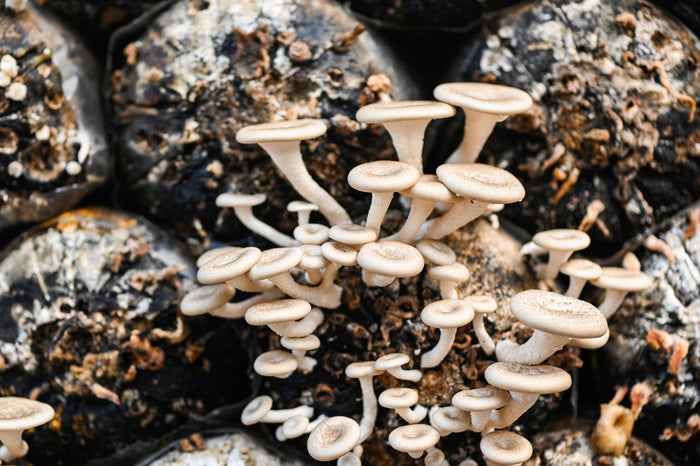Exploring the Impact of Moisture Levels on Mushroom Substrate

The Role of Moisture in Mushroom Growth
Mushrooms are unique organisms; they aren't plants, nor are they animals. They belong to the fungi kingdom, and their growth is highly dependent on the presence of moisture. (Mushrooms are actually more genetically similar to animals than to plants.) Here's why moisture levels are so crucial:
- Nutrient Absorption: Mushrooms are heterotrophic, meaning they rely on external food sources. In this case, the substrate serves as their food. To access the nutrients present in the substrate, mushrooms need the right moisture levels. Without enough moisture, they won't be able to absorb the necessary nutrients to grow.
- Hyphal Growth: Mycelium, the network of thread-like structures that form the "roots" of mushrooms, requires moisture to expand and develop. It's through these hyphae that mushrooms extract nutrients from the substrate. Without sufficient moisture, the mycelium's growth will be stunted.
- Contamination: Moisture level is a balance when cultivating mushrooms indoors. If you have insufficient moisture, as stated earlier, your mycelium growth will be stunted. However, if you have too much moisture, your mycelium will also be stunted, as it will suffocate. With too much moisture, your substrate will also have a higher risk of contamination from other organisms.
- Humidity Control: The moisture level in your substrate also affects the surrounding environment in the growing chamber. Proper humidity levels are vital for the formation and development of mushroom pins and their eventual growth into mature fruiting bodies.
Balancing Moisture Levels
Now that we understand the importance of moisture in mushroom growth, let's discuss how to achieve the right balance. Here are some tips to consider:
- Consistency is Key: Maintain a consistent moisture level throughout the entire growing process. Fluctuations can stress the mycelium and reduce yields.
- Use a Reliable Substrate: Choose a high-quality substrate with the right moisture-holding capacity. Common substrates include straw, wood chips, or sawdust. Each substrate has different moisture requirements, so be sure to research and follow recommendations for your chosen species.
- Hydration Method: There are various methods for hydrating your substrate, such as soaking, pasteurization, or steaming. The method you choose should be based on the type of substrate you're using and the specific requirements of your chosen mushroom species.
- Monitor and Adjust: Keep a close eye on moisture levels during the growing process. You may need to mist or add water as needed to maintain the ideal humidity in your growing chamber.
- Fruiting Chamber Humidity: Ensure that the environment in your fruiting chamber maintains the necessary humidity levels for the mushroom species you're growing. This may require using a humidifier, automated misting system, or regular manual misting.
Conclusion
The impact of moisture levels on mushroom substrate cannot be overstated. It's a fundamental factor that can make or break your mushroom cultivation efforts. Achieving the right balance of moisture is essential for nutrient absorption, mycelial growth, and ultimately, a successful mushroom harvest. With proper care and attention to moisture, you can look forward to bountiful and healthy mushroom yields. Happy mushroom growing!


